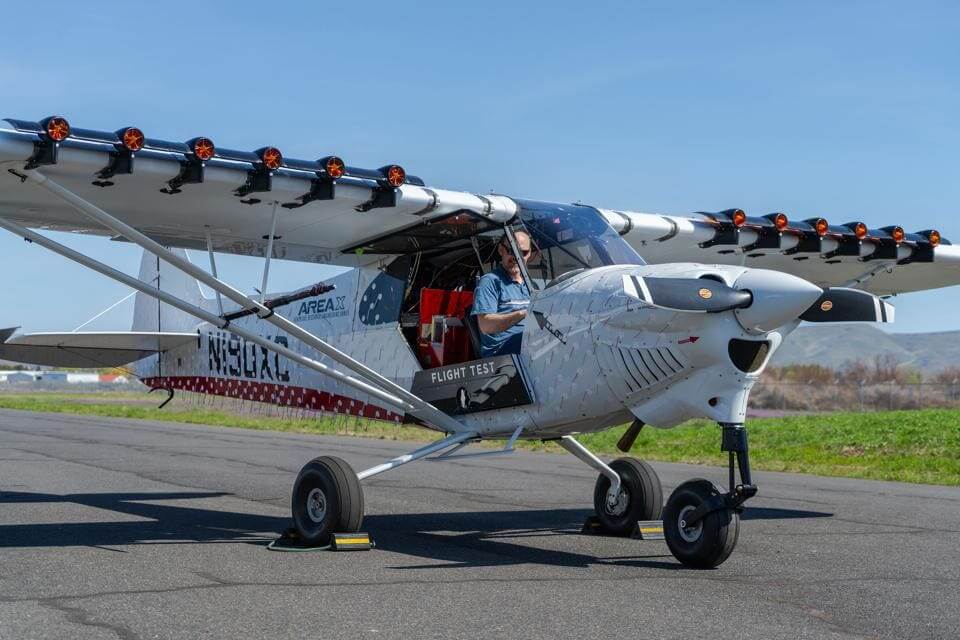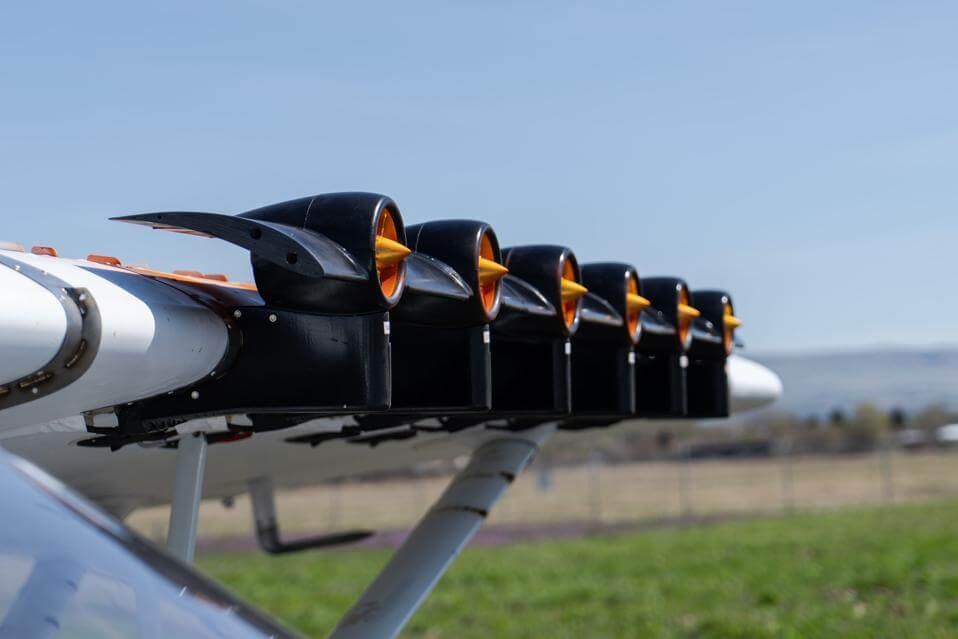
Yakima, Washington-based CubCrafters is already known for taking the classic Piper Super Cub design to short takeoff and landing extremes. A new aerodynamic system the company is developing could take the Cub and other aircraft further.
Cubcrafters calls its new system, Electric Lift Augmenting Slats (ELAS). ELAS is a new twist on an old idea, the recognition that speeding the flow of air over the top of an aerodynamic device like a wing or horizontal tail can increase lift.
It has most commonly been seen with “blown flaps” whose origins stretch back to the 1930s. Air blown through nozzles across wing trailing-edge flaps has been used to speed and shape the airflow over the rear edge of the wing, increasing lift and allowing fixed wing airplanes to fly slower, and takeoff and land in shorter distances.
CubCrafters has essentially taken the idea and applied it to the leading edge of the wings on one of its NX Cubs. Multiple electric ducted fans are integrated into the leading-edge slats (flap-like devices on the front of a wing) on the aircraft in segments (two fans per segment). The fans can be moved to different positions along the slats, spaced adjacently or separated to achieve different effects.
Flight testing began last week at the company’s Yakima facility and a test matrix evaluating different configurations, slat and fan power settings and environmental conditions will be followed in coming months. CubCrafters’ analyses have forecast that the high energy airflow ELAS will deliver through and around the slats could ultimately boost lift by a factor of 1.5 to 4.0 depending on the airfoil geometry and flight conditions.
The company’s lineup of Super Cub based designs are already eminently capable STOL sport and bush aircraft. Energy drink giant, Red Bull, demonstrated the capability of CubCrafters’ products when it pulled off a stunt last March wherein a pilot landed a Carbon Cub on a 78-foot diameter helipad located on top of the 56-story Burj Al Arab Hotel in Dubai.

Given that its aircraft can already produce such stunning performance, I asked CubCrafters president and CEO, Patrick Horgan, why his company is seeking to innovate technology to further increase STOL capability.
CubCrafters has its own Skunk Works-like division called “Area X” Horgan explains, an annex within the company that has developed a number of aerodynamic tweaks since 2016. At the time, the eVTOL movement was gaining steam with Uber’s
As he did so, he co-authored a paper comparing the advantages of STOL and eVTOL in conjunction with Oregon State University professor, Dr. David Ullman and CubCrafters’ chief engineer, Vincent Homer. Ullman and Homer had gained a patent for the use of distributed electric ducted fans for propulsion and Horgan was developing leading-edge slats.
The trio saw the possibility of combining these elements to create in ELAS a system that then-emerging eVTOL makers would struggle to match.
“We thought the technology for battery [energy] capacities was unlikely to achieve what a lot of the industry was investing in,” Horgan says.
The subsequent evolution of urban air mobility aircraft from pure VTOL to on-wing designs to accommodate the strictures of battery energy limits (and the recent dropping of electric aircraft production plans by manufacturers like Tecnam) has proven them right.
ELAS can augment lift with much less energy. “We don’t need the next-generation batteries,” Horgan affirms. “The batteries available now are entirely sufficient because we augment [lift] in the takeoff, climb and landing phases. ELAS is not a full-time device.”
Horgan and his compatriots have acquired a patent for it, conducted extensive modeling and analysis in partnership with Oklahoma State University’s School of Mechanical and Aeronautical Engineering, and have now embarked on flight testing.

Their ambition is not simply to allow Carbon Cubs to alight from and settle down upon ever-smaller bits of off-runway terra firma. ELAS can potentially be applied to larger aircraft with specific passenger or cargo missions, giving them short-field performance comparable to bush aircraft but with larger payloads. Horgan says the system can be scaled to different sizes.
“Our demonstrator is simply proving the technology in its first form. ELAS can be sized to meet the margins you need for any given airframe.”
That means ELAS systems could potentially be fitted to crop dusting or aerial firefighting aircraft, to passenger aircraft used in tight, off-runway settings, or even to new eVTOL designs. The system can be used as an add-on or fully integrated into the design of a fixed-wing airplane.
CubCrafters is doing the flight testing and evaluation in conjunction with a NASA grant to refine the technology. Initially the slats and the ducted fans will be fixed but in future they will rotate forward as traditional high-lift slats do. In addition to shorter takeoff and landing distances, Horgan says ELAS could enhance aircraft controllability and stability at slow speed as well as increasing payload margins.
Horgan says it’s “too early to tell” what bolt-on or integrated ELAS systems may one day cost but it’s notable that CubCrafters is looking for commercial partners to enter into joint ventures with. “We think the applicability of this expands way beyond our aircraft,” Horgan says. “We’re looking forward to a future [in which] this expands beyond our current production line.”
The potential for CubCrafters to license its ELAS technology would add to the company’s diversified portfolio. It already makes fully FAA-certified airplanes, partially certified Light Sport aircraft, Experimental builder-assist and full kit airplanes. CubCrafters is the only general aviation manufacturer to do so Horgan asserts and it has self-funded development in all of these categories.
In line with its ambitions for expansion, the company is now public having released a (Regulation A) stock offering in November 2022. The offering and other plans Horgan alluded to signal a potentially long runway for CubCrafters as a technology developer rather than simply a general aviation equipment maker. That’s an ironic possibility for a company whose product was heretofore dedicated to doing everything in the shortest space possible.



